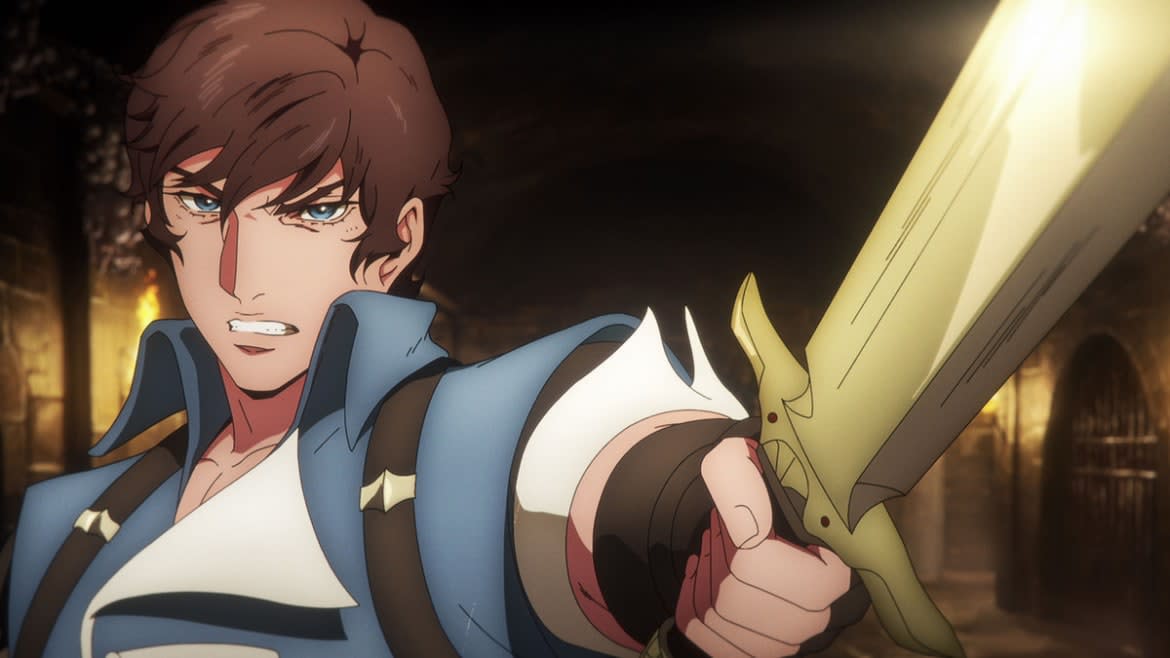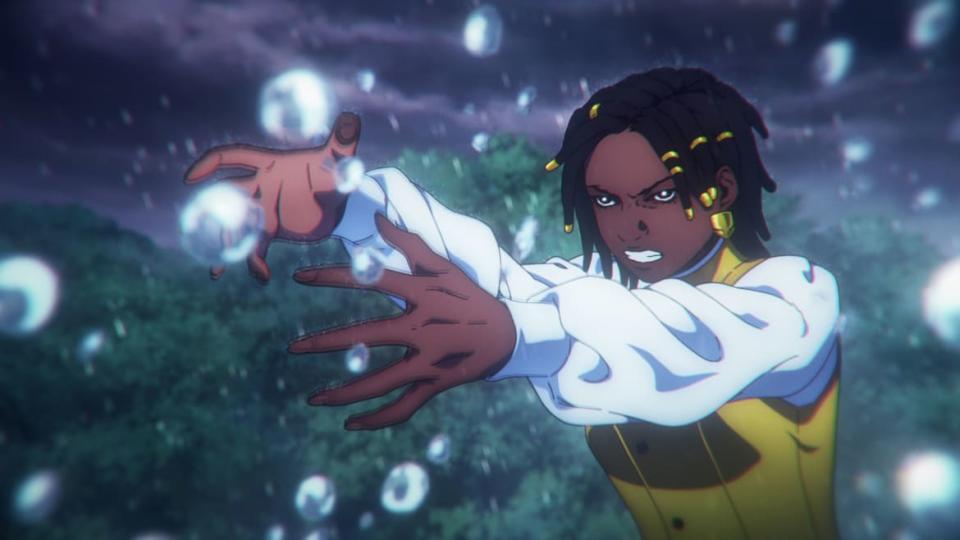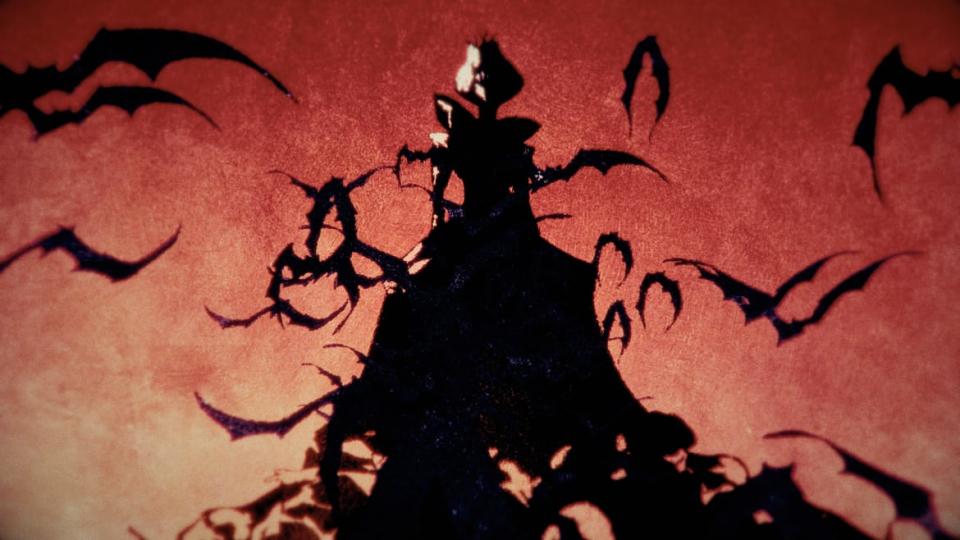In ‘Castlevania: Nocturne,’ Hot Vampires and Revolutions Make a Great Mix

In Castlevania: Nocturne, Netflix’s latest animated adaptation of the Konami video games, imperialism is the biggest vampire of all: predatory, parasitic, violent, and frustratingly long-lived. An obvious metaphor, perhaps, but to its credit, it’s never said aloud— and it makes for an enthralling change from the previous series, with some added real-world bite. It’s an ambitious, if sometimes unwieldy new start.
With the story set amidst various revolutions—American, French, Haitian—Castlevania: Nocturne’s international cast of characters each experiences oppression under imperialist rule, with showrunners Clive Bradley and Kevin Kolde, directors Samuel and Adam Deats, and their writing team using (most of) their vampires as symbolic of the nature of colonizers and aristocrats. (Netflix’s first Castlevania series creator, Warren Ellis, is out, following a series of allegations of sexual coercion.) But it’s not as ponderous as that might sound; Nocturne still carries the base appeal of vampire fiction, its fanged villains as seductive as they are monstrous.
The Castlevania series follows the bloodline of the Belmonts, a storied dynasty of vampire hunters. While the last series followed the adventures of Trevor Belmont (Richard Armitage), this sequel (which drops Sept. 29) picks up 300 years later, with his descendant Richter Belmont (Edward Bluemel).

The series starts in 1780s Boston, with the murder of young Richter’s mother, Julia, who is brutally killed by the vampire Olrox as fireworks bloom in the background in celebration of the signing of the Treaty of Paris. It quickly moves to 1792, when the game it’s primarily based on, 1993’s Castlevania: Rondo of Blood, is set. Richter is now in Machecoul, at the periphery of the French Revolution. Vampires are siding with the ruling class, bloodsuckers metaphorically as much as they are literally, seeking to put a new monarch in power. That would be “vampire messiah” Erzebet Bathory (Franka Potente), based on a real noblewoman and alleged serial killer who passed into folklore.
Nocturne is not a total transformation of the previous series, but a refined iteration on it, adding new wrinkles. As a video game adaptation, Castlevania plays fast and loose with lore, with Nocturne leaning further into historical drama. (There are, however, some nostalgic treats for those familiar with the games.) To fit that structure, characters from across Castlevania’s own history are revamped. Visually, they’re faithfully reworked to the Gothic stylings of the video games and Ayami Kojima’s original illustration work, elegant and pleasingly detailed. Beyond the principal cast, the design cleverly blurs the line between the fashion of the wealthy and the features of the vampires: stark white, powdered make-up blurs the line between preening courtier and pallid creatures of the night.
As played by Bluemel, it doesn’t take a long look to see the nuances running underneath Richter’s bravado, done to insulate himself from further pain after his mother’s death. Sometimes it feels like the show strains to give Richter and the other characters an edge purely through the language they use rather than letting their actions speak for themselves. Frankly, most times Richter says “fuck,” it feels childish and awkward—though perhaps, in his case at least, that’s the point. Regardless, Richter and his crew are a charismatic bunch, with various twists on their game counterparts. His distant relative and comrade-in-arms Maria (Pixie Davies) is now a French revolutionary, though she still has the power to throw magic birds at people. Her sorceress mother, Tera, is played with gentle pathos by none other than Nastassja Kinski (Paris, Texas), who nurses a tortured past of her own.
‘Adventure Time: Fionna and Cake’ May Be the Most Exciting Show of the Year
To its credit, where the earlier Castlevania somewhat compartmentalized the interactions of the characters with the context of its Eastern European setting, in Nocturne, the characters and setting are inextricably linked. Such is the case with Nocturne’s take on Annette, the most compelling reinterpretation from the games. The third episode, written by Zodwa Nyoni, connects Annette back to a plantation in 1780s Saint Domingue, a French colony. She’s a former slave (played by The Underground Railroad’s Thuso Mbedu) who escaped and took part in the Haitian Revolution. (The threat of violence against slaves only ever implied; the sensitivity there is definitely appreciated.) The show isn’t naive about her circumstances: Annette recognizes that the French Revolution doesn’t guarantee liberation for her.
But the first Castlevania lived and died (and lived again) by the detail of its highly choreographed fights, and they still impress: They’re elaborate, bloody dances between the feral grace of vampires and vampire hunters alike, accented by anime-inspired visual touches. For all its pirouetting, it rarely feels weightless; even intangible magic energy lands with a mighty crash. For fear of indulging the lizard part of my brain, the brawls are a highlight, like one where Richter flexes some newfound elemental power, scored by an arrangement of “Divine Bloodlines.”

The show’s flashiest sequences aren’t solely reserved for monster slaughter, however. Some of its most beautiful, expressionistic sequences arrive through Nocturne’s portrayal of how various characters liberated themselves, like a haunting shot of hands reaching after Tera in a flashback to her flight from her homeland, as every part of the frame quite literally reaching out to pull her back. Annette’s escape is another such instance, the lines of the drawings annihilated into a blur of frenzied color. Such moments are a breathtaking display of how important these revolutions are to the central cast, as the season conveys its core themes of reclaiming personhood from oppressive power powerfully through its style.
Like its predecessor, Nocturne extends this consideration of its character’s inner lives to its villains. Castlevania: Symphony of the Night boss Olrox is here an Aztec vampire, and an exciting example of how Nocturne intersects histories of colonialism and imperialism. Even more crucially, Olrox is hot now, and Zahn McClarnon plays him with soft-spoken, seductive, even laid-back charm. In the trend of Castlevania’s other tragic Big Bads, he’s actually quite the romantic, and only gets more complicated as the series goes on, as he comes to contradict his vampire brethren calling for their own empire. He’s a fascinating rogue element, an impressive reinvention.

This is all to say that one of Nocturne’s best qualities is how it uses the games as a rough outline but not a blueprint, colliding elements from various games (Rondo, Symphony, Bloodlines, Harmony of Dissonance, for those keeping score). But it’s not entirely changing the formula, so some of the previous show’s sticking points are present here too. The compact episode order means that the story feels pretty light on its feet; on the other hand, it also feels compressed towards the season’s end, like it’s fast-tracking some of its character work in manners that feel unsatisfying, only to end just as the show really begins to wind up. On the bright side, its cliffhanger teases some genuine excitement to come through its various, twisting character relationships.
But at its best, Castlevania channels violence and sensuality into something a little more sensitive than its gory, sexy vampire action would first suggest. When it manages that balance, before sparking the always electrifying spectacle of its action sequences, it’s euphoric. Despite some nagging feelings, Castlevania: Nocturne sets a strong foundation for a new chapter in this series. Better still, it’s sexy vampire action playing to anthropology nerds, using the original game’s position at a historical crossroads to add a new, satisfying flavor.
Get the Daily Beast's biggest scoops and scandals delivered right to your inbox. Sign up now.
Stay informed and gain unlimited access to the Daily Beast's unmatched reporting. Subscribe now.

